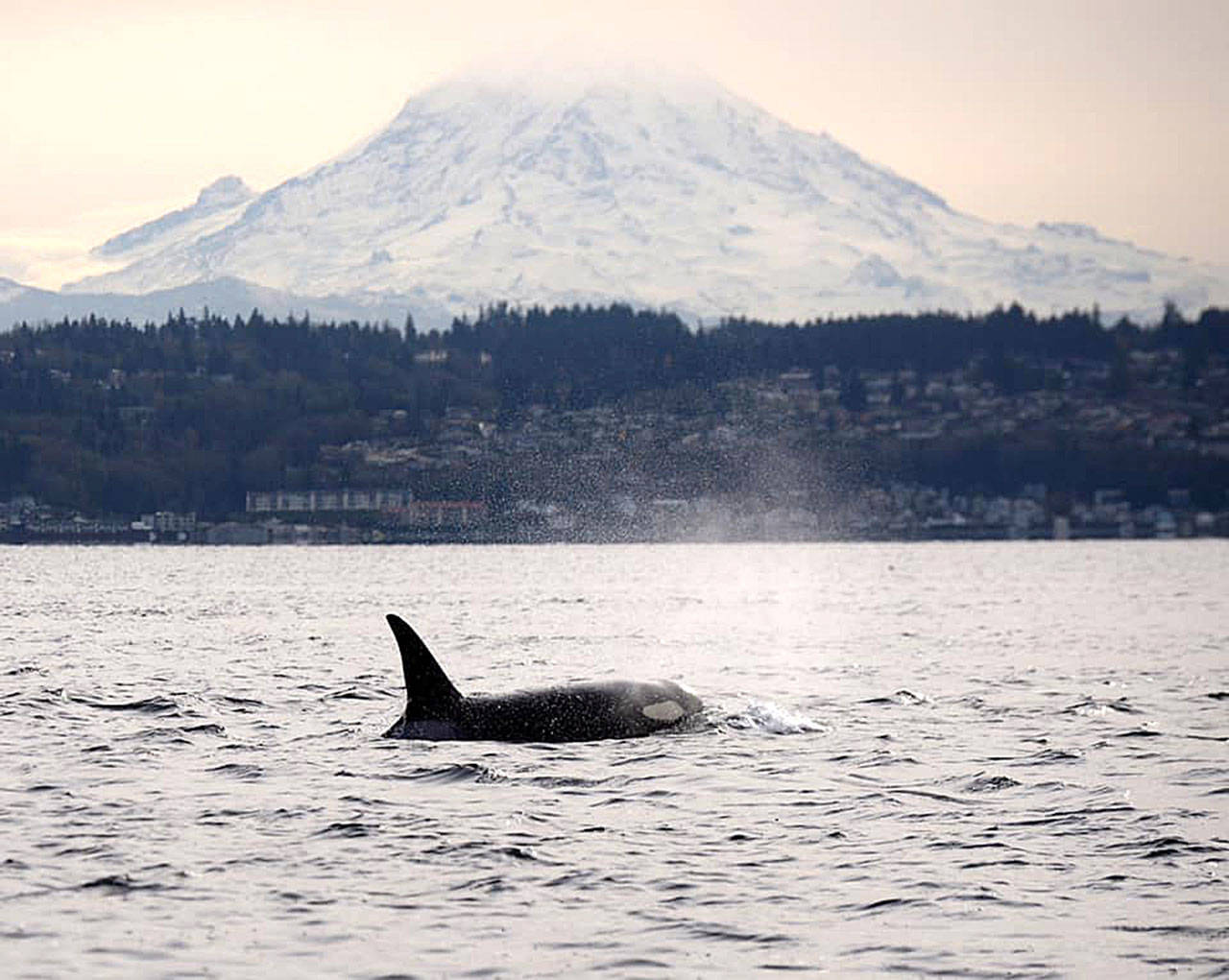Hey, look over there — orcas!
Several islanders took pictures and shot video of the J Pod as they were spotted in the Puget Sound around Vashon-Maury Island last week.
While the visuals offered amusement for islanders who see the whales as very much a part of Vashon-Maury, Annie Stateler, marine mammal stranding coordinator for the island, was able to offer some insight to The Beachcomber on their activity Nov. 25 and 26.
Stateler counted 22 J Pod members traveling through East Passage, spending time near or in Commencement Bay before traveling north up East Pass again.
On Monday, she said the whales milled for approximately 20 minutes, but did not enter Commencement Bay before turning north again. The following day, the orcas appeared to be foraging in Commencement Bay for about an hour before they headed north in East Passage later in the afternoon.
“That’s not unheard of for them to do that — certainly, they’ve done that before — but the rapidity with which they made the turnaround was maybe a bit unusual,” said Stateler, who saw the orcas at Point Robinson on Monday and took photos. “I’d be curious to know why they came down here so fast and they turned around.”
Stateler and others speculated the behavior may have been because one of the orcas is expecting a baby.
“Which would be joyful, that would be great,” she said. “More ominous possibilities are somebody is sick or someone’s about to die.”
Stateler, who has been on Vashon-Maury Island since 1994 and has seen a lot of “dramatic changes” in how the orcas use their habitat, said the whales are being done a “huge favor” if people view them from shore rather than approach them in the water.
The reason, Stateler said, is because vessels and noise “are considered threats to the recovery of our critically endangered” J, K and L Pods.
Disturbance from vessels is a major focus of research on the Southern Residents by the National Oceanic and Atmospheric Administration, she said.
“Research indicates that cumulative impacts from vessels impede the Southern Residents’ ability to communicate, echolocate, and forage,” as well as their health and survival, Stateler wrote in an email to The Beachcomber. “Watching endangered whales from shore is more eco-friendly, precautionary, and respectful of their vital needs: feeding, resting, and socializing with minimal disruption.”



